Bee's Wrap Produce Bags Review
Will these reusable produce bags make your groceries last longer?
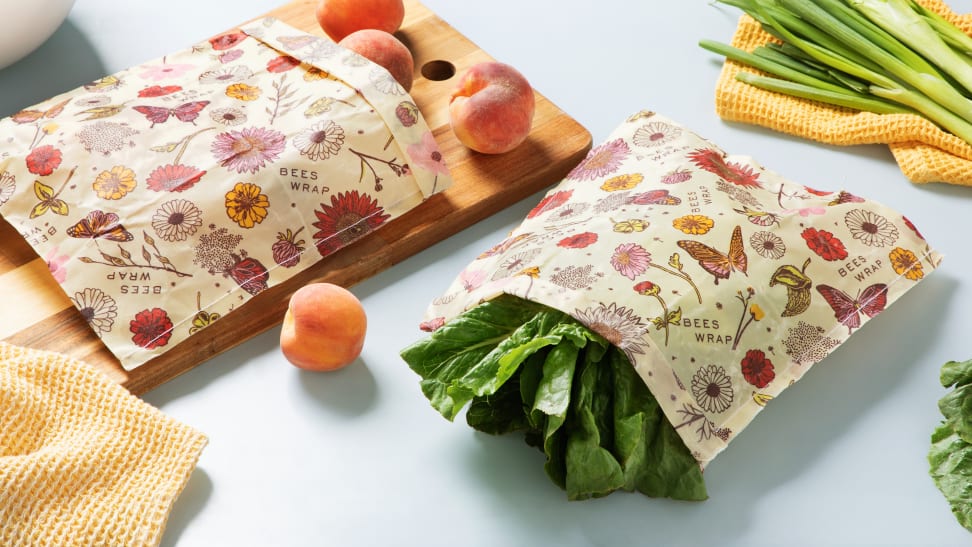 Credit:
Reviewed / Tim Renzi
Credit:
Reviewed / Tim Renzi
Products are chosen independently by our editors. Purchases made through our links may earn us a commission.
-

Bee's Wrap Produce Bag
Pros
-
Eco-friendly
-
Good for low-humidity foods
Cons
-
Small
-
Tough to clean
-
Poor at keeping certain foods fresh
-
The more we notice the mounting effects of climate change, the more we try to adapt our lifestyles to fight them.
That's part of what attracted us to Bee's Wrap Reusable Produce Bags, which offer a sustainable, reusable, and efficient way to store produce—in place of the single-use plastic you find at the grocery store.
But, apart from its eco-friendly nature, could these bags really keep your fruit ripe and your greens fresh? We tested them out for ourselves to compare them to plastic and see whether they are worth adding to your sustainable routine.
How we tested Bee's Wrap Reusable Produce Bags
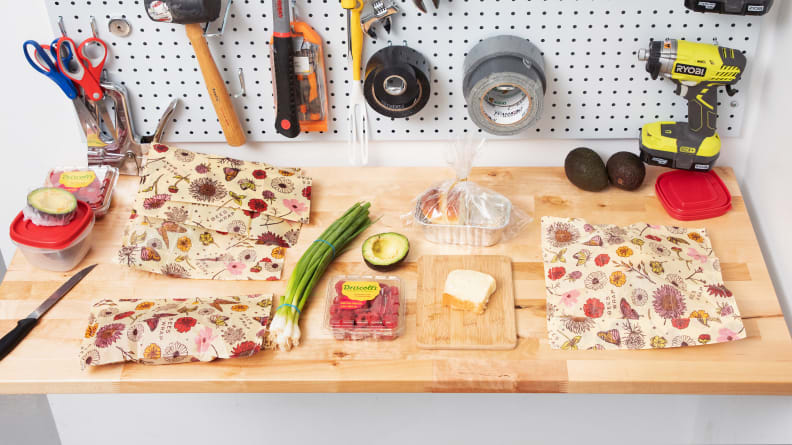
We put the Bee's Wrap produce bags through two rounds of testing, at home and in the lab.
We wanted to get the full experience of these bags from a consumer perspective and from a scientific perspective to fully measure their functionality. That's why they went through two rounds of testing: One at our kitchen staff writer's house, and the second at the Reviewed test labs.
First, we took the bags on a grocery shopping trip to gauge their convenience. (Our consensus: If you're already used to bringing reusable grocery bags on your errand runs, it shouldn't be too hard to stash these bags in there as well—as long as you don't forget to wash them first.)
We filled three Bee's Wrap produce bags with fresh apricots, parsley, and broccoli rabe. We then filled three store-provided plastic bags with the same produce for comparison.
We were hoping that the same discount provided for reusable grocery bags (offered by retailers like Whole Foods) would apply to the produce bags as well, but sadly, it was not offered here.
We kept all six bags side-by-side in the fridge for a week, monitoring them every day or so to record any changes as they developed.
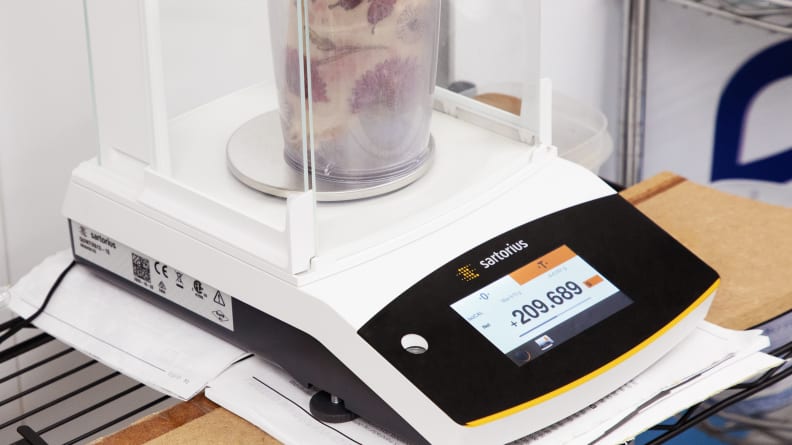
The Reviewed lab team weighed the produce bags throughout testing to measure moisture loss.
After that test, we brought the bags into the lab where they underwent further testing for an additional five days—this time using raspberries, avocados, scallions, and bread as the main subjects.
We similarly compared fruits stored in Bee's Wrap bags to alternative storage methods, like plastic bags and everyday tupperware. The fruits were stored in one crisper drawer, and the veggies were kept in the other.
Throughout the tests, each item’s weight was measured several times to track moisture loss, and physical changes were also recorded along the way.
What we like about Bee's Wrap Reusable Produce Bags
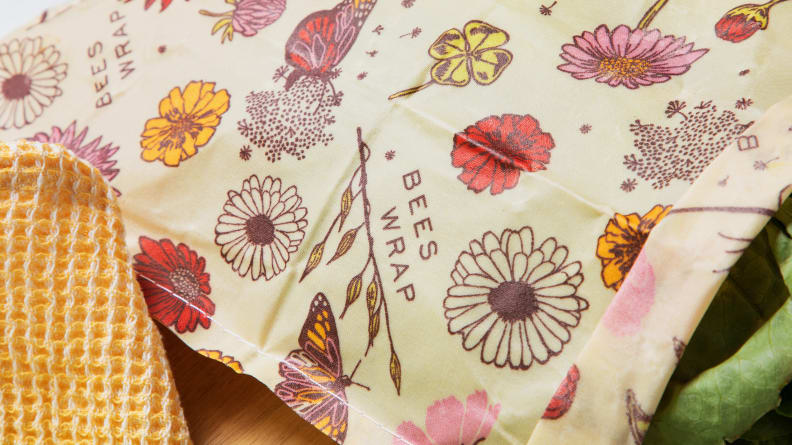
Bee's Wrap produce bags are made of plant-based, sustainable ingredients.
They're sustainable
The most obvious plus side to these bags is that they're eco-friendly. Each bag is made with wholesome materials like organic cotton, plant-based wax, organic plant oil, and tree resin. Ingredients like beeswax and jojoba oil also have inherent antibacterial properties, which are meant to help keep food fresh and support the product's longevity.
These bags can be used and reused for up to a year. Once they've reached the end of their life, they can then be composted or used as a natural fire starter—that way, nothing ends up in a landfill.
They keep low-humidity foods fresh
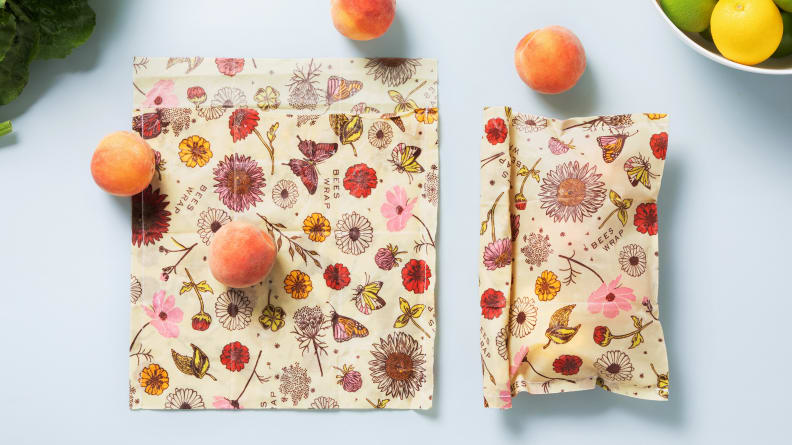
Apricots had some of the best results after being stored in Bee's Wrap produce bags.
During our tests, we found that low-humidity foods—like apricots—stayed the freshest in Bee's Wrap bags.
Compared to the apricots stored in a plastic bag, the Bee's Wrap sample remained firm and fresh for several days in the fridge, compared to the sample in plastic, which became mushy and developed brown spots in a short amount of time.
Certain types of produce, like thick-skinned fruits, thrive on low humidity—which is what makes them such a good match for Bee's Wrap. The material allows for ample air flow and less build-up of moisture during storage, which often contributes to premature rotting for this type of produce.
What we don't like

Scallions stored in Bee's Wrap bags (right) became visibly limp after five days.
They're don't keep high-humidity foods fresh
On the flip side, foods that require some moisture in order to stay fresh—like leafy greens and thin-skinned fruits—won't last long in these kinds of produce bags.
That's partially because the flap that's meant to seal shut on these bags was never fully closed—even after attempting to seal them with the warmth of our hands, as instructed. This means that there was always air flowing throughout, and foods that desperately required moisture couldn't build any up.
Broccoli rabe and parsley became dry and shriveled in these bags after only a few days, and in the lab, the scallions and raspberries showed similar results. The Bee's Wrap berries actually produced mold by the end of the experiment, as they had gotten crushed due to the bag's poor structure and emitted juices. The berries in store packaging, however, didn't produce any mold.
The avocado samples didn't show much of a difference in moisture loss among the Bee's Wrap bag, traditional tupperware, and Press 'n Seal wrap. But the Bee's Wrap sample also didn't show an improvement, as all three avocados were equally brown by the fifth day of testing.
They're relatively small
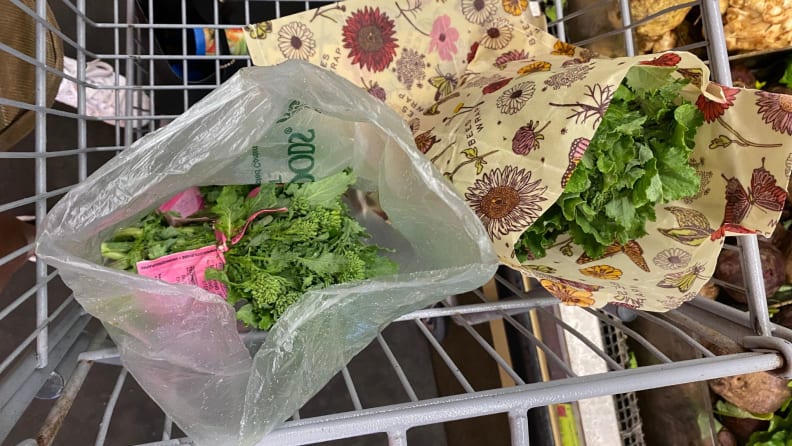
While Bee's Wrap bags could only fit two bunches of broccoli rabe, plastic produce bags left more room to spare.
Even if these bags did seal shut effectively, most items were too tall to fit inside. At 11 by 11 inches, they're much smaller than the average plastic bag you'd find in your grocery store's produce section.
When it came to bunches of broccoli rabe, for example, only two could fit in the Bee's Wrap bag, while three or four could've been squeezed in the plastic.
Other items like fresh parsley and scallions poked right out of the bag since they couldn't fit inside, which caused them to rot even faster than other samples.
If you're planning to use these on a produce-heavy run, you'd have to stock up—and given that they run for about $15 a bag, that's quite an investment to consider.
They're a hassle to clean and dry
Another downside to these bags—and any similar reusable produce bags—is that they require regular upkeep.
Bee's Wrap produce bags must be washed by hand with soap and cool water, which isn't the easiest task since they get decently slippery when wet.
They then require a significant amount of time (and space) to dry on your dish rack before use. You'll have to plan ahead when you want to take them on a grocery trip.
And, then, of course, there's the struggle of forgetting to bring them with you after washing them (which I would definitely be guilty of).
They can sometimes leave foods with an aftertaste
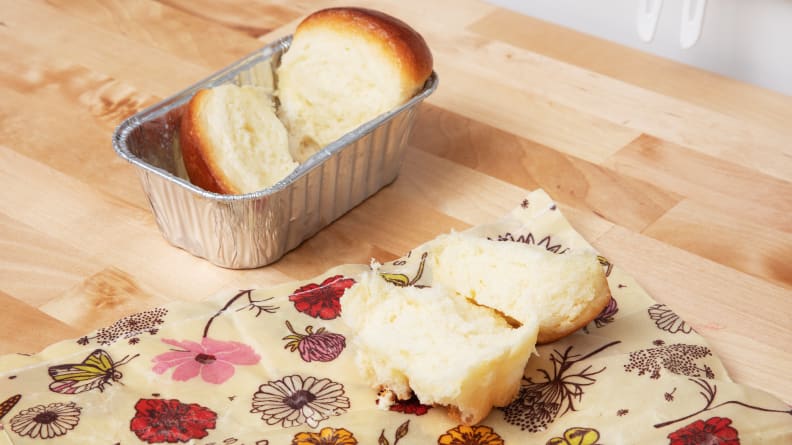
We tried storing bread in the bags as well, to see how long it stayed fresh.
In addition to testing produce, we also decided to test bread after seeing it advertised as optimal for storage on the Bee's Wrap website.
Compared to the store packaging that the bread was sold in, the Bee's Wrap bread became much tougher, losing over 4% of its original moisture content by the fifth day. There was also a slight tree resin aftertaste to the bread that was not present in the store-packaged loaf.
Are Bee's Wrap Reusable Produce Bags worth it?
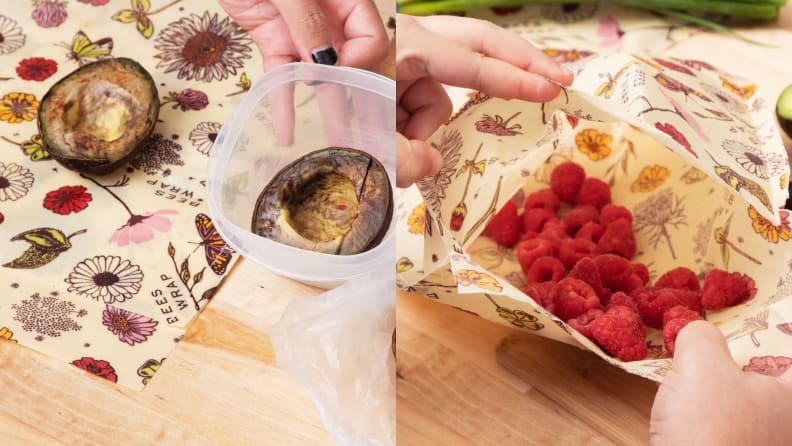
Neither avocados nor raspberries showed positive results after storing them in Bee's Wrap bags.
Not for most foods
If you're looking for an eco-friendly product that will save you money on produce by lengthening its shelf life, you might be disappointed by these bags. Their small size isn't practical for many tall fruits and veggies, and they don't keep produce fresher in most situations. They're also not machine-washable, which makes upkeep a pain.
But, if sustainability is your number one priority, these bags might still have a place in your kitchen. Just make sure to add a wet paper towel when storing high-humidity foods (or spray them regularly with water), so that they don't go limp after just a day or two.
Otherwise, we have plenty of other product recommendations that are reusable and effective for keeping your produce fresh.
The product experts at Reviewed have all your shopping needs covered. Follow Reviewed on Facebook, Twitter, Instagram, TikTok, or Flipboard for the latest deals, product reviews, and more.
Prices were accurate at the time this article was published but may change over time.




